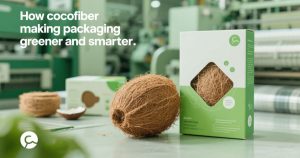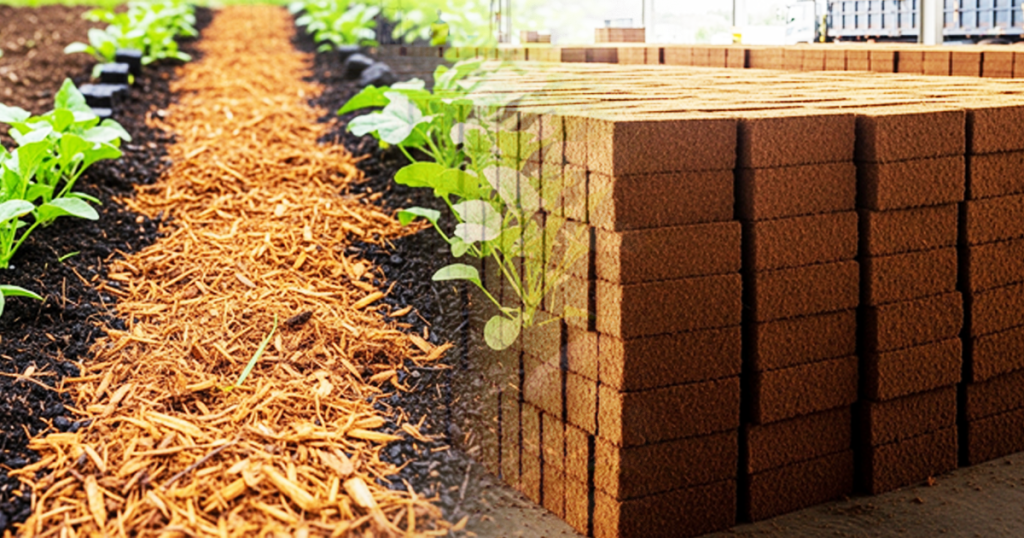Unpacking the Science Behind Cocopeat Blocks
As a researcher in agricultural substrates, I’ve spent years studying various growing media. Among the most sustainable and versatile of these is cocopeat, a by-product of coconut husks. When compressed into blocks, cocopeat becomes a lightweight, pH-stable, and highly absorbent material ideal for horticulture, hydroponics, and even environmental applications.
What makes cocopeat blocks truly remarkable lies in their physical and chemical composition. These blocks typically have a high water retention capacity, up to 8–10 times their weight, while still maintaining excellent aeration for roots.
The ideal pH range (5.5–6.5) makes it suitable for most crops, and low levels of electrical conductivity (EC) ensure minimal salt interference with plant growth. But not all cocopeat blocks are created equal.
Variability in source material, processing techniques, and treatment methods can dramatically affect their performance in the field. Understanding these nuances is key to harnessing the full potential of this renewable resource.
The Processing Journey: From Husk to High-Value Substrate
The transformation of raw coconut husk into a commercially viable cocopeat block is neither accidental nor simple. The process begins with the collection and retting of husks, which are soaked for several weeks to loosen the coir fibers.
What remains is the pith cocopeat which is then washed, dried, and mechanically compressed into blocks. One of the most crucial stages in this process is buffering, where the naturally occurring potassium and sodium ions in the cocopeat are replaced with calcium and magnesium through a rinsing treatment.
This buffering step is vital to prevent nutrient lockout when the blocks are used for plant cultivation. Once processed, the cocopeat is compressed into blocks often 5 kg bricks or 650-gram briquettes for easier transport and storage.
Upon hydration, these blocks expand significantly, yielding up to 70–75 liters of grow media per block. This expansion capability adds to their value, especially in large-scale agricultural operations.
Properties that Make Cocopeat a Smart Choice
Cocopeat blocks have several properties that distinguish them from traditional substrates like peat moss or rockwool. Their porous structure supports excellent oxygen flow to plant roots.
Unlike peat moss, cocopeat is renewable and has a lower carbon footprint, aligning with global trends toward eco-friendly farming. Moreover, cocopeat has a high cation exchange capacity (CEC), enabling it to hold nutrients and release them to plants over time.
This makes fertilization more efficient, reducing overall input costs. With proper treatment, the microbial load in cocopeat is minimal, which lowers the risk of soil-borne diseases. Researchers are also exploring its potential in soilless agriculture, including hydroponics and vertical farming.
The consistency in particle size, moisture retention, and durability across multiple growth cycles makes it an attractive substrate for controlled-environment agriculture (CEA).
Future Opportunities: Beyond Just a Growing Medium
The possibilities of cocopeat stretch far beyond greenhouses and nurseries. In my recent studies, I found promising results in using cocopeat for bioremediation, especially in absorbing heavy metals and filtering greywater. Its high surface area and organic composition make it suitable for treating wastewater or reclaiming degraded soils.
In construction, trials have begun to use cocopeat as a bio-insulation material due to its thermal properties. Additionally, as urban farming expands globally, cocopeat blocks could become the backbone of compact, sustainable systems in space-limited cities.
The ongoing development of custom-blended cocopeat substrates tailored with perlite, vermiculite, or compost also signals a shift toward substrate optimization based on crop-specific needs.
A Sustainable Substrate with Expanding Horizons
Cocopeat blocks are no longer just an alternative to peat moss; they are a frontrunner in the evolution of smart agriculture. Their physical properties, environmental sustainability, and versatility across industries make them a valuable asset in the quest for sustainable solutions.
For policymakers, entrepreneurs, and farmers alike, the message is clear: investment in cocopeat research and processing infrastructure can yield significant economic and ecological returns. As someone immersed in the field, I believe we are only beginning to unlock the true potential of this humble, fibrous material.







